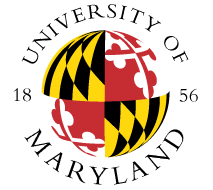Online
March 6th, 2025
AI For Biodiversity Conservation, By: Lily Xu
Xu began with an example of how losing a key species, such as vultures in India, can increase human mortality, in this case by 4% from disease! I learned that Nature can only reduce 37% of the world's CO2 emissions. Dr. Xu then went on to emphasize the dangers of poaching. Poaching is the second most damaging action to biodiversity, behind habitat loss. Dr. Xu decided to use AI to help protect against these acts of poaching. Recent poaches, land data, weather, and ruggedness were plugged into AI to then predict the highest trafficking poaching areas. Dr. Xu ended up helping park rangers, now stationed in better positions recommended by AI, to catch five times more poachers over the next five months!
I thoroughly enjoyed Dr. Xu's presentation. As AI continues to develop and improve, newer generations and even current workforce members are going to have to implement AI into their professions. The tool is too powerful not to use as a resource. If we can predict poachers, think about other crimes that can be diminished with the use of AI. As more information is fed to artificial intelligence, however, our privacy will vanish. I enjoy thinking about what AI could do for us in the future, and DR Xu's presentation put into perspective just how close we are to AI becoming a necessity in the workforce.
Quantum Machine Learning For Advancing Space - Based Photovoltaic Cells, By: Soheil Rasoul
Mr. Rasoul began by giving his goal: a more effective method of harvesting solar energy. To do this, the solar panels would best receive power from space. This location brought up several problems, including plasma, trapped particles, radiation, thermal fluctuations, solar activity, and a neutral atmosphere that acts as a vacuum. To implement these panels, Rasoul used the help of a supervised machine learning model with "light GBM". By using complex equations involving density and linear algebra, Rasoul found out the minimum energy required to displace single surface atoms, the backbone of solar power. He then calculates the total energy loss through the action and plugs both the energy required and the energy lost into the supervised machine.
I found the lesson interesting as I loved the linear algebra aspect. However, a fair share of information flew over my head. How the equations were implemented, how models were set up, and some of the vocabulary Rasoul used were simply not familiar enough to me. I enjoyed seeing the use of mathematics through research in the STEM field, as I am a math major hoping to do something similar. Space has always interested me, so I will rarely hear a presentation about space and not be intrigued. I did have some background knowledge on the structure of solar panels, which did help me better visualize his new theoretical design. His work fit well with what I am learning in college: Math and science, which makes me respect the work he was presenting.


